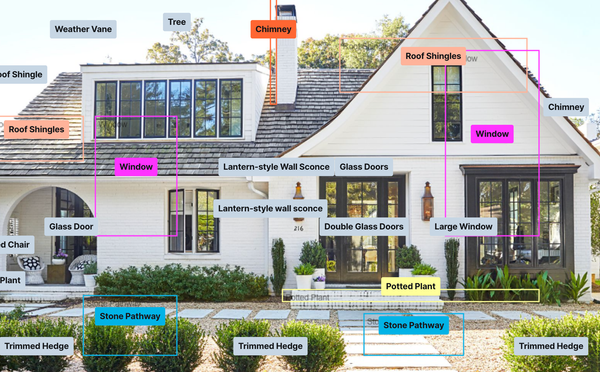The Cascading Crisis: Mortgage Lending and Insurance in High-Risk Climate Areas
The blog discusses the future of mortgage lending and insurance in high-risk climate areas, exploring how rising insurance costs, increased weather risks, and lender retreat could reshape real estate markets.

Overview
The combination of escalating insurance premiums, increasingly severe weather events, and the withdrawal of insurers from high-risk regions is creating an unprecedented challenge for homeowners, mortgage lenders, and the broader financial system. Over the next few years, this confluence of factors could lead to dramatic shifts in the housing market, particularly in areas like Florida that are most vulnerable to climate-related disasters. This thought piece explores how this situation may evolve and its potential ramifications for the economy, homeowners, and lending institutions.
Rising Insurance Costs and Their Immediate Impact
Florida has already become the epicenter of a home insurance crisis. Insurance premiums have doubled in just three years, with average costs expected to approach $12,000 annually by the end of 2024[1][2]. This surge in costs is not an isolated issue but a symptom of a broader trend. Climate change is increasing the frequency and intensity of extreme weather events like hurricanes, which in turn pushes insurers to reassess risk models and raise premiums to cover anticipated losses[3].
Many insurers, overwhelmed by the magnitude of risk, have begun pulling out of states like Florida altogether. As a result, homeowners have fewer options for securing insurance, which is a requirement for most mortgage loans. This trend has already led to significant disruptions in the mortgage market. According to a 2024 report, 63% of lenders stated that at least one borrower they worked with had difficulty securing home insurance[4]. Without adequate insurance, mortgage approvals may decline, leaving many prospective buyers unable to enter the housing market.
Mortgage Lending in High-Risk Areas: A Tipping Point?
If insurance premiums continue to rise and coverage options dwindle, mortgage lending in high-risk areas could become increasingly precarious. Lenders are already grappling with the implications of skyrocketing premiums on borrower debt-to-income ratios, which affect mortgage eligibility[5]. As premiums rise, homeowners may either be forced to reduce their coverage to the minimum required to satisfy mortgage conditions or opt out of purchasing insurance altogether, increasing the risk to lenders in the event of a catastrophic loss.
A likely scenario is that mortgage lenders will begin to price loans in high-risk areas differently, offering higher interest rates to compensate for the increased risk[1:1]. In some cases, lenders may follow the example of Canadian banks, which have stopped issuing mortgages in certain flood-prone areas[5:1]. If this practice spreads to the U.S., areas most susceptible to hurricanes, wildfires, and floods could see a withdrawal of mortgage lending altogether.
The Broader Economic Implications: Devaluation and Depopulation
As insurance becomes unaffordable or unavailable, homeowners in high-risk areas may find themselves trapped with depreciating properties. If lenders become more selective in issuing mortgages, the demand for homes in these areas could plummet, leading to a significant devaluation of properties. This scenario would not only impact current homeowners, who may find themselves unable to sell their properties, but also lead to a broader contraction in the local housing market.
Property devaluation, combined with increasingly expensive insurance and mortgages, could prompt an exodus from high-risk areas. A recent survey found that nearly 12% of Florida homeowners were already considering moving due to insurance costs[6]. If more residents leave these areas, the local economies, which rely heavily on property taxes and real estate markets, could face severe challenges.
The Evolving Cost-Benefit Analysis: Buying vs. Renting
As insurance costs soar and home values become unstable, the traditional cost-benefit analysis of buying versus renting may shift dramatically. Historically, homeownership has been a cornerstone of financial security, offering the benefits of long-term investment and wealth-building. However, as climate risks drive up costs, the financial equation tilts. The growing burden of insurance premiums, property devaluation, and mortgage risk makes renting a more viable option for many.
Renters, for example, are insulated from direct exposure to insurance premiums. In high-risk areas, this makes renting a more attractive and financially predictable option compared to homeownership. At the same time, landlords may eventually pass their rising insurance and property maintenance costs to residents in the form of higher rents[4:1].
For potential homeowners, the decision to buy becomes fraught with uncertainty. The potential for property depreciation due to climate risks and the difficulty of securing affordable insurance raises questions about whether homeownership still makes sense in these vulnerable areas. The shift toward renting may also exacerbate a migration away from high-risk areas, particularly as the costs of homeownership increasingly outweigh its long-term benefits.
The Role of Investors and Self-Insurance
As insurance becomes prohibitively expensive or unavailable, property ownership in high-risk areas may increasingly become the domain of institutional investors and high-net-worth individuals who can afford to self-insure. This new class of investors will require deep pockets to absorb potential losses in the event of a natural disaster.
For such investors, high-risk real estate may present a speculative opportunity, especially if they anticipate future appreciation after the initial wave of devaluation. However, self-insuring against catastrophic losses comes with significant financial risk. Institutional investors may be more willing to accept this risk, given their broader portfolios and access to capital markets, but smaller investors and individual homeowners will likely be excluded from this market[3:1][6:1].
A Financial System Under Strain
The implications of rising insurance premiums extend beyond homeowners and mortgage lenders. If high-risk areas experience widespread devaluation and mortgage defaults due to insurance-related issues, the financial sector could face significant losses. During the 2008 financial crisis, a similar pattern emerged when declining property values led to a wave of defaults, placing immense strain on mortgage lenders and financial institutions.
There is growing concern that a similar scenario could play out as climate-related risks increase. In areas where home prices drop, mortgage-backed securities could lose value, leading to increased repurchase demands from entities like Fannie Mae and Freddie Mac[5:2]. These government-sponsored enterprises may then push losses back onto the lenders, further exacerbating financial instability[6:2].
Conclusion: The Road Ahead
The coming years will likely see profound changes in the housing market as rising insurance costs and extreme weather events reshape the landscape of mortgage lending in high-risk areas. Homeowners in vulnerable regions like Florida may face a perfect storm of devaluation, unaffordable insurance, and reduced mortgage availability. The ripple effects of these changes could extend throughout the economy, impacting property values, financial institutions, and the broader housing market.
In summary, the interconnectedness of insurance, mortgages, and climate risks suggests that a profound shift is underway. As insurance costs climb and lenders retreat from high-risk areas, the real estate market in these regions could face long-term structural changes that reshape both ownership patterns and economic stability.
References
Insurify. "Hurricane Season from Hell Could Drive Up Home Insurance Costs." Insurify, 2024. ↩︎ ↩︎
Fox Weather. "Home Insurance Rates to Rise Through 2024." Fox Weather, 2024. ↩︎
National Mortgage News. "Ted Tozer Explains the Climate Threat to Lenders." National Mortgage News, 2024. ↩︎ ↩︎
RMA Journal. "Rising Insurance Premiums, Rising Risks for Banks." RMA Journal, 2024. ↩︎ ↩︎
Policygenius. "Hidden Impact of Hurricanes: Higher Insurance Premiums." Policygenius, 2024. ↩︎ ↩︎ ↩︎
National Mortgage Professional. "Home Insurance Costs, Coverage Worsening In 2024." NMP, 2024. ↩︎ ↩︎ ↩︎

The Open Real Estate Company
Picket is on a mission to make real estate open, efficient, and fun for all
Take a Look





